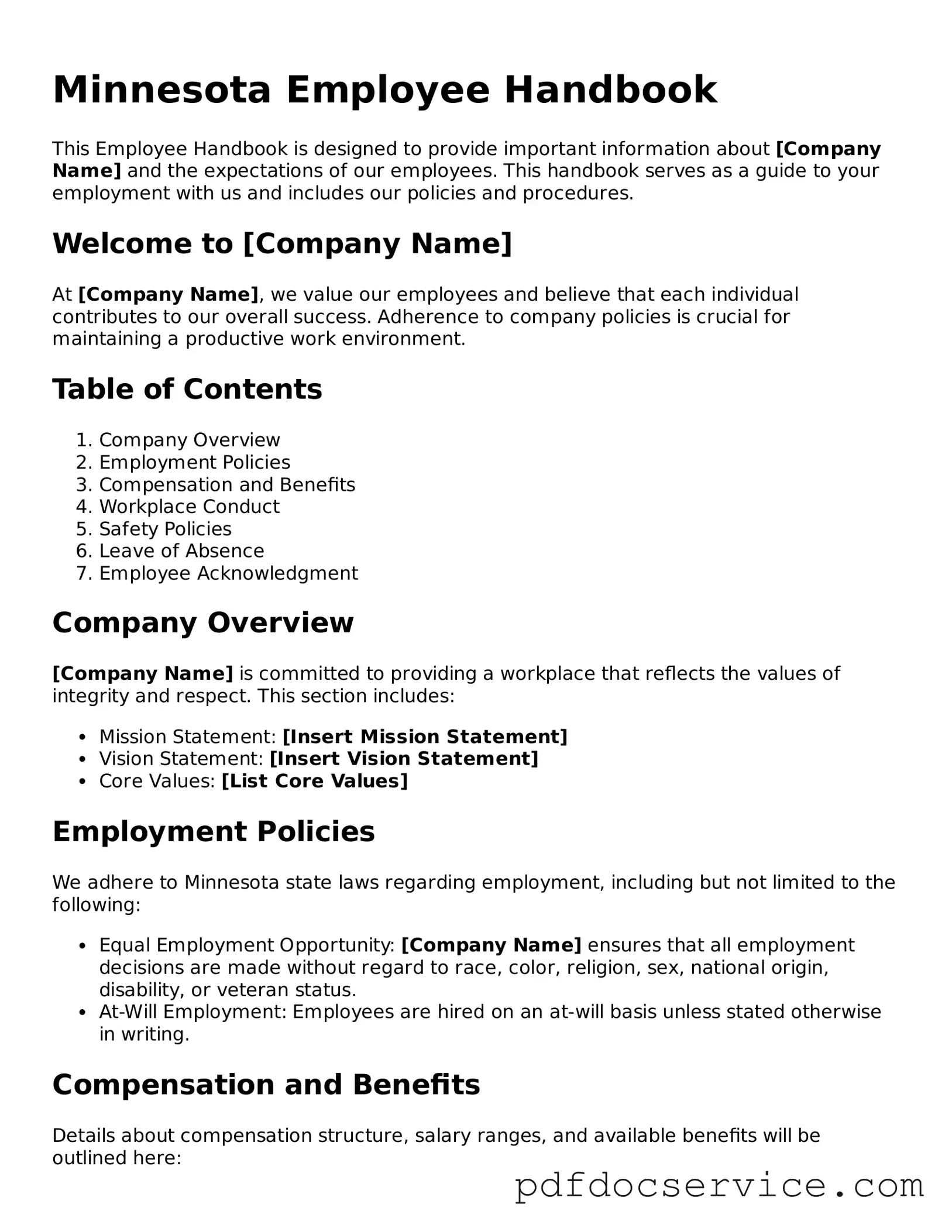Printable Employee Handbook Template for Minnesota
The Minnesota Employee Handbook form serves as a crucial document that outlines the rights, responsibilities, and expectations of both employers and employees within the state. This handbook not only provides essential information about workplace policies but also helps foster a transparent and respectful work environment. By establishing clear guidelines, it aids in preventing misunderstandings and promotes a culture of accountability.
Open Employee Handbook Editor
